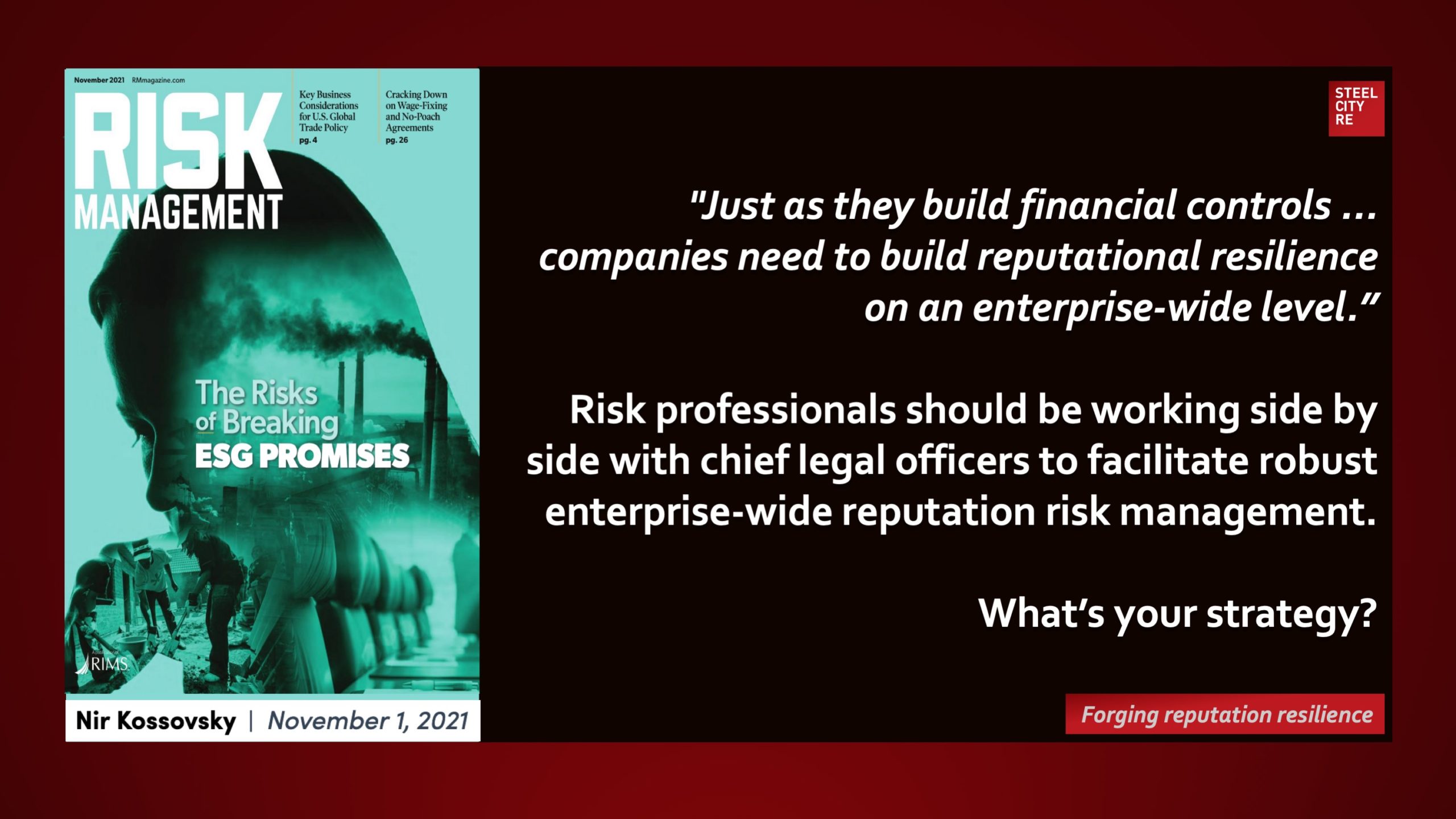“Regulators, investors and customers are beginning to examine whether companies are living up to those expectations or falling short on executing ESG goals. In many instances, these expectations have proven beyond firms’ capabilities, and a growing number of board members may be personally exposed to risk as a result.”
Risk Management Magazine
November 2, 2021
“Just as they build financial controls … companies need to build reputational resilience on an enterprise-wide level.”
Click on Read More (below) for more contents (No Paywall).
Risk professionals should be working side by side with chief legal officers to facilitate robust enterprise-wide reputation risk management.
Click on the highlighted text for a broader view of reputation risk case studies and reputation premium; or to explore additional articles by Steel City Re here, mentions of Steel City Re here, and comments on newsworthy topics by Steel City Re here.
Reputation is Mission-Critical
A management program for ethics and compliance can forestall prosecution and mitigate fines. Similarly, oversight of “mission- critical” issues can forestall securities litigation. A program for reputation resilience, comprising both risk management and insurance (reinsurance)-authenticated oversight for all that is mission-critical, can create value in many ways. To this end, Steel City Re offers a Reputation Resilience Program.
Having a robust Reputation Resilience Program in place offers, amongst other benefits:
- Protection for the company, its staff, executives, and board from litigation and regulatory challenges
- Improved governance processes and better enterprise risk management protocols; i.e., measuring reputational risk
- Establishment of an agile operating, communications, and decision-making team, with clear roles and responsibilities, trained and ready to handle all reputational threats; i.e., a reputation risk management framework
- Proactive management of risks that could give rise to delays or derailing concerns around new product and strategic partnership launches
- Captured behavioral economic value from stakeholders; i.e., value of reputation
- Reduced costs of debt and risk transfer while boosting equity value; i.e., boosting reputational value
A hazard of reputation risk is a lurking gap between stakeholder expectations and reality. Another hazard is the emotional intensity associated with expectations. The peril is anger from disappointed stakeholders. This video and this written summary explain the behavioral economic features of the many perils of reputation risk.
Illustrated Guide to Reputation Risk Management. Mitigating risk strategically through expectation management and operational adjustments evinces thoughtful management and dutiful governance. Financing such risks evinces prudence, and doing so publicly enables stakeholders to appreciate and value the effort. These comprise the core of Steel City Re’s professional services.
One Question
Illustrated Guide to Reputation Risk Management. ESG-linked reputation risks are prevalent and material. Are reinsurance and insurance for ESG-linked reputation risk part of your strategy?

